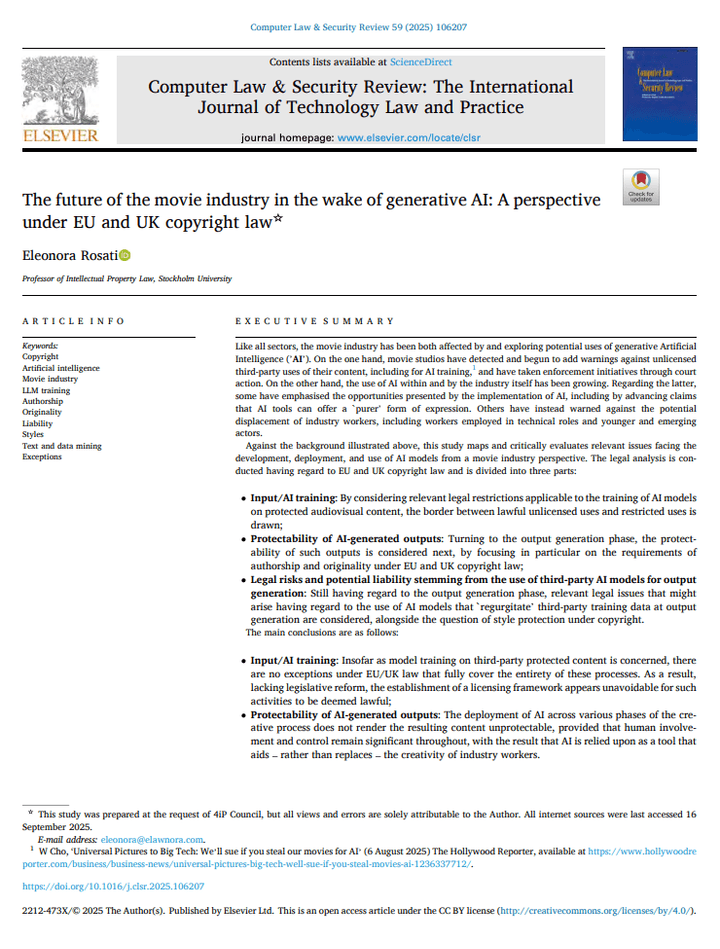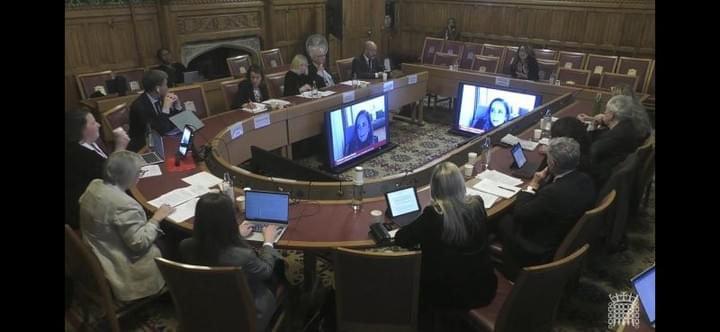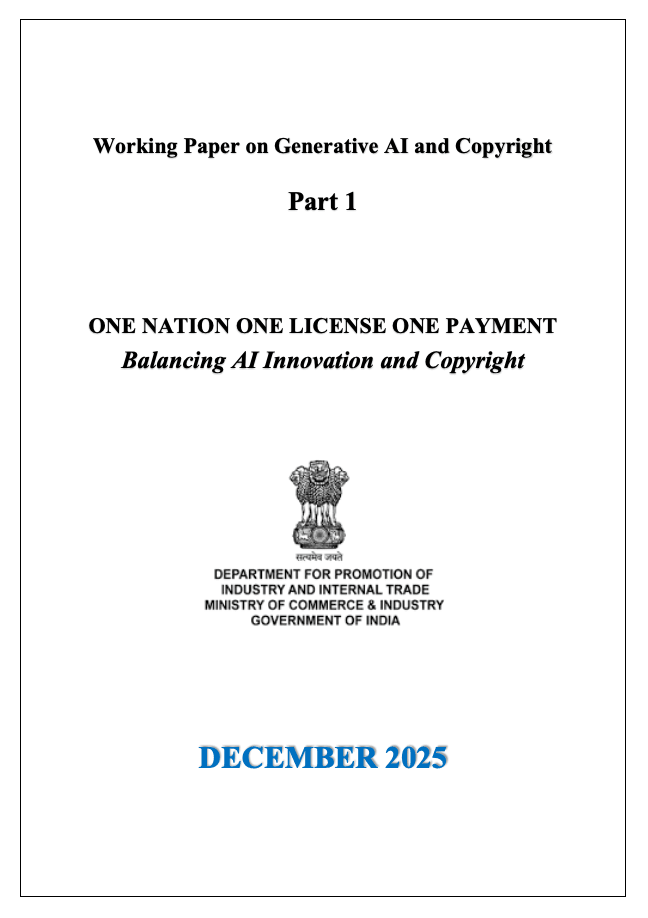
- …
- …
Copyright Exceptions and Fair Use Defences for AI Training Done for “Research” and “Learning,” or the Inescapable Licensing Horizon
Infringing AI: Liability for AI-Generated Outputs under International, EU, and UK Copyright Law
The Future of the Movie Industry in the Wake of Generative AI: A Perspective under EU and UK Copyright Law
On 25 November 2025, Eleonora Rosati acted as Witness during the Oral Evidence Session of the UK House of Lords Communications and Digital Committee as part of its "AI and copyright" inquiry.
Eleonora Rosati's research outputs cited in Indian Government's 2025 working paper 'Balancing AI Innovation and Copyright'
In December 2025, the Department for Promotion of Industry and Internal Trade, Ministry of Commerce and Industry, Government of India published a working paper titled 'Balancing AI Innovation and Copyright', which cites two recent research outputs of Eleonora Rosati: Infringing AI: Liability for AI-Generated Outputs under International, EU, and UK Copyright Law and Copyright Exceptions and Fair Use Defences for AI Training Done for “Research” and “Learning,” or the Inescapable Licensing Horizon.
© Eleonora Rosati 2014-2025






